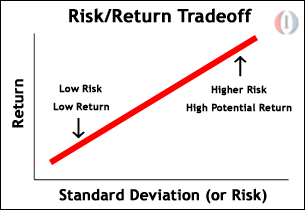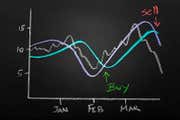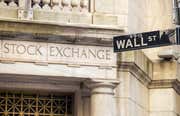Risk and return are opposing concepts in the financial world, and the tradeoff between them could be thought of as the “ability-to-sleep-at-night test.” Depending upon factors like your age, income, and investment goals, you may be willing to take significant financial risks in your investments, or you may prefer to keep things much safer. It’s crucial that an investor decide how much risk to take on while still remaining comfortable with his or her investments.
For investors, the basic definition of “risk” is the chance that an investment’s actual return will be different from what was expected. One can measure risk in statistics by standard deviation. Because of risk, you have the possibility of losing a portion (or even all) of a potential investment. “Return,” on the other hand, is the gains or losses one brings in as a result of an investment.
Generally speaking, at low levels of risk, potential returns tend to be low as well. High levels of risk are typically associated with high potential returns. A risky investment means that you’re more likely to lose everything; but, on the other hand, the amount you could bring in is higher. The tradeoff between risk and return, then, is the balance between the lowest possible risk and the highest possible return. We can see a visual representation of this association in the chart below, in which a higher standard deviation means a higher level of risk, as well as a higher potential return.
 |
(Source: Investopedia.com)
It’s crucial to keep in mind that higher risk does NOT equal greater return. The risk/return tradeoff only indicates that higher risk levels are associated with the possibility of higher returns, but nothing is guaranteed. At the same time, higher risk also means higher potential losses on an investment.
On the safe side of the spectrum, the risk-free rate of return is represented by the return on U.S. Government Securities, as their chance of default is essentially zero. Thus, if the risk-free rate is 6% at any given time, for instance, this means that investors can earn 6% per year on their assets, essentially without risking anything.
While a 6% return might sound good, it pales compared to returns of many popular investment vehicles. If index funds average about 12% per year over the long run, why would someone prefer to invest in U.S. Government Securities? One explanation is that index funds, while safe compared to most investment vehicles, are still associated with some level of risk. An index fund which represents the entire market carries risk, and thus, the return for any given index fund may be -5% for one year, 25% for the following year, etc. The risk to the investor, particularly on a shorter timescale, is higher, as is volatility. Comparing index funds to government securities, we call the addition return the risk premium, which in our example is 6% (12%-6%).
One of the biggest decisions for any investor is selecting the appropriate level of risk. Risk tolerance differs depending on an individual investor’s current circumstances and future goals, and other factors as well.
Financial Concepts: Diversification
-
 Personal Finance
Personal FinanceRisk Management Framework (RMF): An Overview
A company must identify the type of risks it is taking, as well as measure, report on, and set systems in place to manage and limit, those risks. -
 Investing
InvestingMeasuring a Fund's Risk and Return
Learn the importance of the risk-return relationship in selecting a mutual fund. -
 Investing
InvestingWhy Risk-Free Investments Don't Exist
We explain the risks inherent with all types of investments and why risk-free investments do not exist. -
 Investing
InvestingUnderstanding Risk is Key to Your Investing Strategy
Here's why considering all types of risk is crucial for a successful investment plan. -
 Investing
InvestingThe Risks Associated with Common Investments
Investing inherently involves some risk. Here are some of the different types of investment risks. -
 Financial Advisor
Financial AdvisorActive Versus Residual Risk: Know the Difference
Active risk and residual risk are common risk measurements in portfolio management. Understand the differences between them and find example calculations. -
 Financial Advisor
Financial AdvisorThe Importance of a Client's Risk Assessment
Financial advisors and money managers must do a detailed risk assessment regarding each client before they can recommend a course of action.



